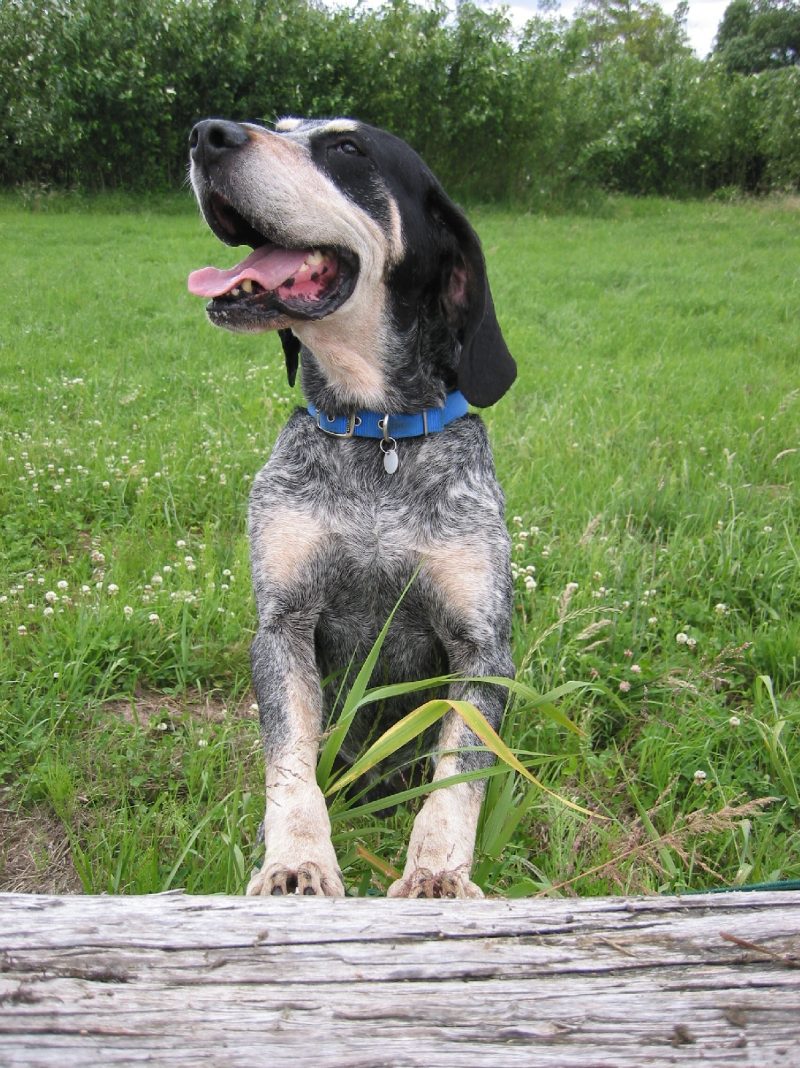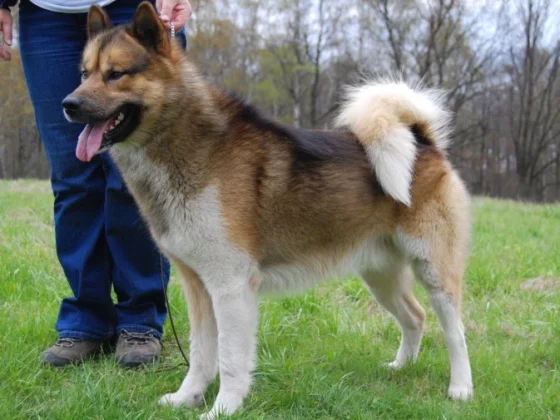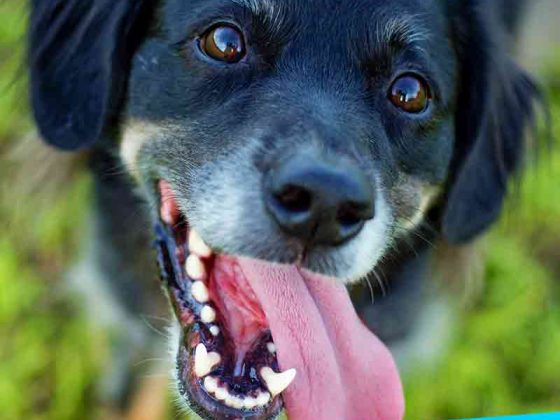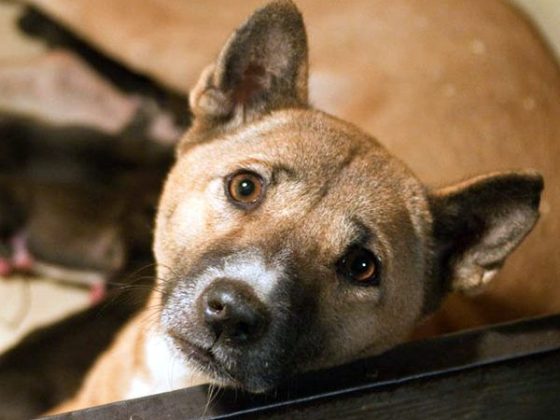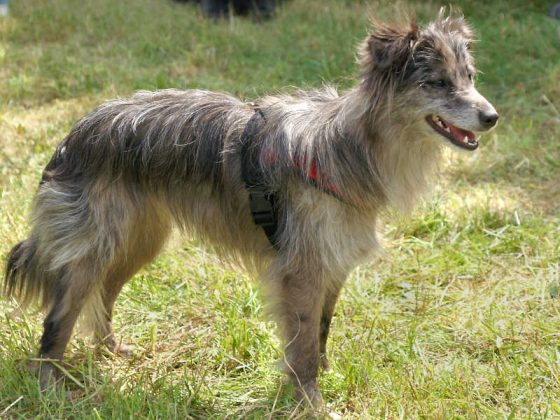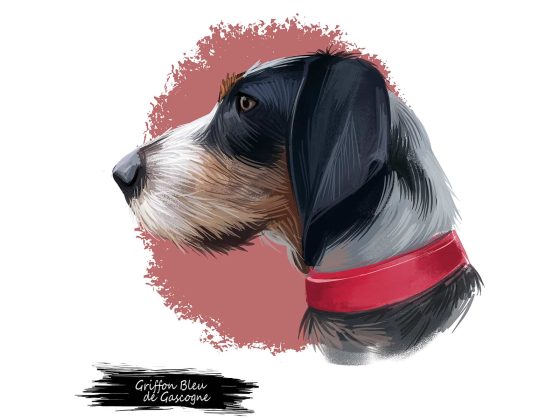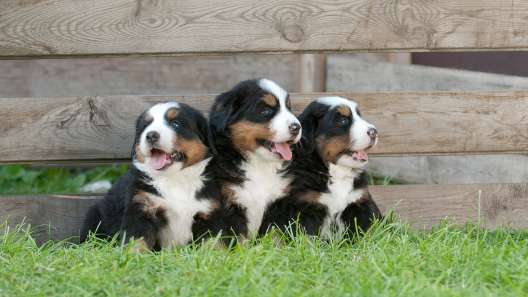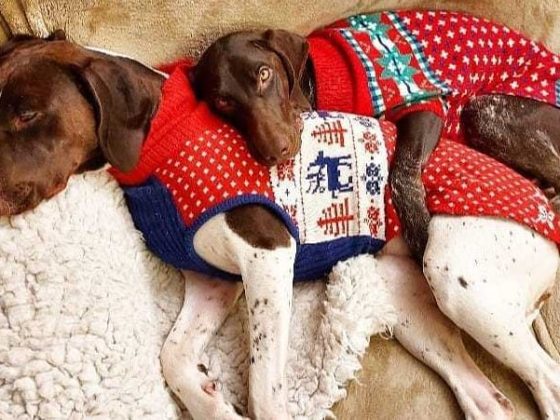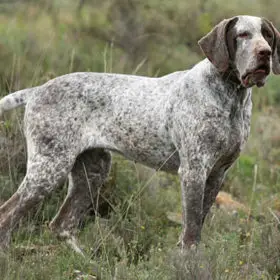The Grand Bleu de Gascogne is a breed of scenthound dogs traditionally employed in hunting packs. They possess a strong physique, a striking head, and a well-muscled neck. These agile scent hounds need ample open spaces, such as large houses with fenced yards, to carry out their everyday activities. Their grooming needs are minimal, and their coats don’t require any special care.
These dogs are renowned for their exceptional sense of smell. When they detect an animal, the Grand Bleu de Gascogne utilizes its stamina to track it and communicates via deep barks and howls. They excel in scent-based sports and competitions, given committed owners.
Origins and History
The Grand Bleu de Gascogne has its roots in the Medieval period in France. Along with other French hounds, they journeyed to England during the Norman Conquest in the 11th century. By the 18th century, they found their way to the United States, where their population grew more than in France. Traditionally, they were used to hunt deer, wolves, and boars.
During the same period, they were brought to the UK for crossbreeding. However, they didn’t mate with any other breed or Kennel Club registered dog until the mid-1980s. They are still quite rare, with only a few breeders in the UK. Their numbers began to decrease with the decline in the wolf population, and due to their high cost, nobility began to switch to more affordable options.
Behavioral Traits Of Grand Bleu de Gascogne
The Grand Bleu de Gascogne is intelligent, loyal, and energetic, with a keen sense of smell rather than speed. They can be reserved around strangers, but they are comfortable and friendly with their familiar circle. They are outdoor dogs and aren’t typically suited for regular pet homes. They may take time to adjust to a family environment since they are not traditionally domestic dogs. Consequently, their behavior within a home largely depends on how the owner raises them. These breeds are not recommended for first-time owners; they require an owner with experience.
Trainability
Training a Grand Bleu de Gascogne can be challenging, despite their intelligence. As independent breeds, they were bred to work. Training should include scent tracking and treats as rewards. They don’t typically enjoy training for its own sake or to entertain and require motivation to learn good habits rather than develop bad ones. Early socialization with family members and other pets, if any, is crucial.
Is Grand Bleu de Gascogne Child-friendly?
With their serene, friendly, and good-natured temperament, Grand Bleu de Gascogne dogs get along well with children. As a large breed, they mature slowly, and as puppies, they can be exuberant and playful around kids. However, supervision during playtime is necessary to prevent accidents. Both children and pets should be taught to interact safely and socialize well.
Health Issues
Bloat: Also known as Gastric Dilatation Volvulus (GDV), bloat happens when gas or fluid causes the stomach to twist. It can occur without warning, so it’s important to feed your dog a healthy, balanced diet. If your dog experiences bloat, seek immediate veterinary attention.
Facts
In 1785, during the War of Independence, a French nobleman, General Lafayette, gifted seven Grand Bleu de Gascogne dogs to George Washington.
One of the seven dogs later gave birth to a litter of 15 puppies.
There are more Grand Bleu de Gascogne dogs in America than in France.
Size
Weight: They typically weigh between 32-35kg.
Height: Males stand between 64-70cm, and females between 60-65cm.


